Who is Śrīmatī Rādhārāṇī?
Part I — The Ultimate Cause and Original Power
Everything has a cause.
Ultimately everything traces back to a “singularity” — a single original cause of all causes.
Vedānta: Eko bahu syāt — One shall be many
So, an essential property of the One Ultimate Cause is expansiveness.
What is the motive for expansion?
Vedānta: ānanda-mayābhāsāt — It is bliss
Taittiriya Upaniṣad: raso vai saḥ — He is ecstasy
Ecstasy / bliss motivates the One to become many. For, by becoming many, joy increases.
無上幸福を表明するために、一が無数となる。
What is bliss?
The original, most potent form of bliss is love.
Love is something exchanged between a lover and a beloved. Therefore “One shall be many”! The Original Entity eternally exists as a distinct person (the beloved) and expands into infinite distinct persons (the lovers).
Who is the Original Beloved?
Śāstra gives many important names for the Original Beloved. For example:
Krishna – The attractive one
Rāma – The beloved
Hari – The one who carries off (steals) all others’ (hearts)
Who are the Lovers of the Original Beloved?
Everyone and everything, including you and me.
But the Original Lover is particularly important. We call her “Rādhā” (literally, “Lover”).
Part II — The Complete Concept of Divinity
Recap: The Original Being is ecstatic love. By nature love wants to express itself and expand, so the the Original Being expands into infinite beings.
How? By ”śakti.”
What is śakti?
Tattva-dīpikā: śakti — kāraṇa-niṣṭhā kāryotpādana yogaḥ dharma viśeṣaḥ — Śakti is the power, within a cause, to generate an effect.
Kāraṇa = cause;
Kārya = effect;
Śakti = the power in the cause which generates the effect (aka. prakṛti)
What is the Original Śakti?
Kāraṇa: The original cause is ecstatic love — Krishna.
Kārya: The effect he wants to generate: the experience of ecstasy — Rasa
What is the Śakti that will enable ecstatic love (Krishna) to generate the experience of ecstasy (rasa)? In simpler terms, “How can love be experienced?” By expressing itself.
Thus the Original Śakti is the power to express love (literally, “Rādhā”).
One Becomes Many Through Śakti
Krishna generates everything through Rādhā.
How?
Śvetāśvatara Upaniṣad: parāsya śaktir vividhaiva śruyate | svābhāvikī jñāna-bala-kriyā ca — ”The Original Śakti functions in many ways, generating inspiration, sentience, and form.
Viṣṇu Purāṇa: hlādinī sandhinī samvit tvayy eka sarva saṁsthitau — “Bliss, form, and sentience are established by that one original śakti.”
The first function of the Original Śakti [Śrīmatī Rādhārāṇī] is hlādinī-śakti — “the energy that expands happiness by expressing love.”
Her second function is saṁvit-śakti — “the energy that expands sentience.”
Her third function is sandhinī-śakti — “the energy that generates form.”
Siddhānta Ratna specifies this order: tatra sandhinī-samvit-hlādinyor yathottaram utkṛṣṭā jñeyāḥ — “Sandhinī, samvit, and hlādinī are successively more exalted.”
The reason for this order: The original entity, Krishna, is ecstatic bliss. His śakti, Rādhā, is the expression of bliss (hlādinī). For this expression to be experienced, there must be sentience (saṁvit), and sentience requires tangible things to be sentient of (sandhinī).
“sat-cit-ānanda” describes the outcome of these three functions of Śrī Rādhā.
Caitanya Caritāmṛta: ānandāṁśe hlādinī, sad-aṁśe sandhinī, cid-aṁśe samvit— “ānanda (bliss) is the product of hlādinī. Tangible form (sat) is the product of sandhinī. Sentience is the product of saṁvit.
In conclusion, all of reality (sat, cit, and ānanda) comes from Śrī Rādhā, who is the inherent powerful energy of Śrī Krishna.
Rādhā is not Different from Krishna
Caitanya Caritāmṛta: rādhā — pūrṇa śakti, kṛṣṇa — pūrṇa-śaktimān | dui vastu bheda nāi, śāstra-paramāṇa — Rādhā is the Original Śakti, Krishna is the Original Śaktimān | They are two components of a single unit, according to the opinion of śāstra.
Śakti is not different from the cause, it is an energy within the cause (kāraṇa-niṣṭhā). But it is a distinct part of the cause (viśeṣa).
Rādhā and Krishna are two distinct parts of a single unit.
A Complete Conception of Divinity
Krishna alone is not a complete conception of divinity. A complete conception includes all three aspects: the original cause, the original energy, and the original effect.
The three letters of the mystic syllable ॐ represent these three aspects of complete divinity.
The beloved — Krishna — the original cause — A
With the lover — Rādhā — the original energy — U
Enjoying love — rasa — the original effect — M
Part III — How Love (Rādhā) Expands
Recap: The Original Entity, Krishna, is ecstatic bliss (ānanda), and wants to experience that bliss (rasa). Rādhā is the potency (śakti) in Krishna that enables him to experience his bliss.
Five Degrees of Love:
The purest, most concentrated bliss is love.
5 degrees of it: śānta, dāsya, sākhya, vātsalya, mādhurya.
- All love is founded on selflessness (śānta),
our own wants and needs become secondary
to the wants and needs of our beloved.
- Love actively begins with helpfulness (dāsya),
we strive to fulfill the wants and needs of our beloved.
- Love intensifies into friendship (sākhya),
intimacy and confidentially develop.
- Love can intensify still further into protectiveness (vātsalya),
we begin to feel that our beloved depends on us, needs us.
- Fully matured intimacy and dependency become true romance (mādhurya)
First Expansion
Rādhā wants Krishna to experience the fullest, ripest joys of bliss – so she first of all establishes mādhurya-rasa by generating Krishna’s form as an infinitely attractive young man, and herself as an infinitely attractive young woman.
She also creates the perfect romantic setting (Vṛndāvana).
Second Expansion
Variety is important to enjoyment, so Rādhā manifests as a second, Candrāvalī, and then into infinite Gopīs.
Third Expansion
Rarity is important to enjoyment, so Rādhā manifests challenges to make the expression of divine romantic love more prized and desirable. This is why the gopīs have husbands, and Krishna has responsibilities (tending cows, being home and certain times for meals, etc)
So, Rādhā, Candrāvalī and the Gopīs manifest as Krishna’s parents and elders, his friends, their own husbands, etc.
In these third expansions Śrī Rādhā accomplishes two goals: (1) she increases the value of mādhurya-rasa and (2) she enables Krishna to enjoy vātsalya, sākhya and dāsya-rasa
Fourth Expansion
To expand variety and rarity still further, all of Rādhā’s expansions expand again and again, generating complete realms, “Vaikuṇṭha realms,” where Krishna can experience different flavors of love, friendship, and so on.
For example in Dvāraka Krishna experiences romantic love from the perspective of marriage and family, and in the more remote Vaikuṇṭhas he experiences love through reverence and majesty.
Fifth Expansion
Each expansion of Śrī Rādhā possesses, like her, independent sentience and will. In her fifth and final expansion, she tends the needs of her expansions who are not inclined to cooperate with their intended purpose.
This expansion generates a facsimile-reflection of everything she already created, but with a veil hiding the central importance of the Original Beloved, Krishna, enabling her uncooperative expansions to pursue their independent ambitions.
But she compassionately engineers this realm so that it affords the opportunity to take up our intended purpose as her assistant and participate in the real world, if and when we so desire.






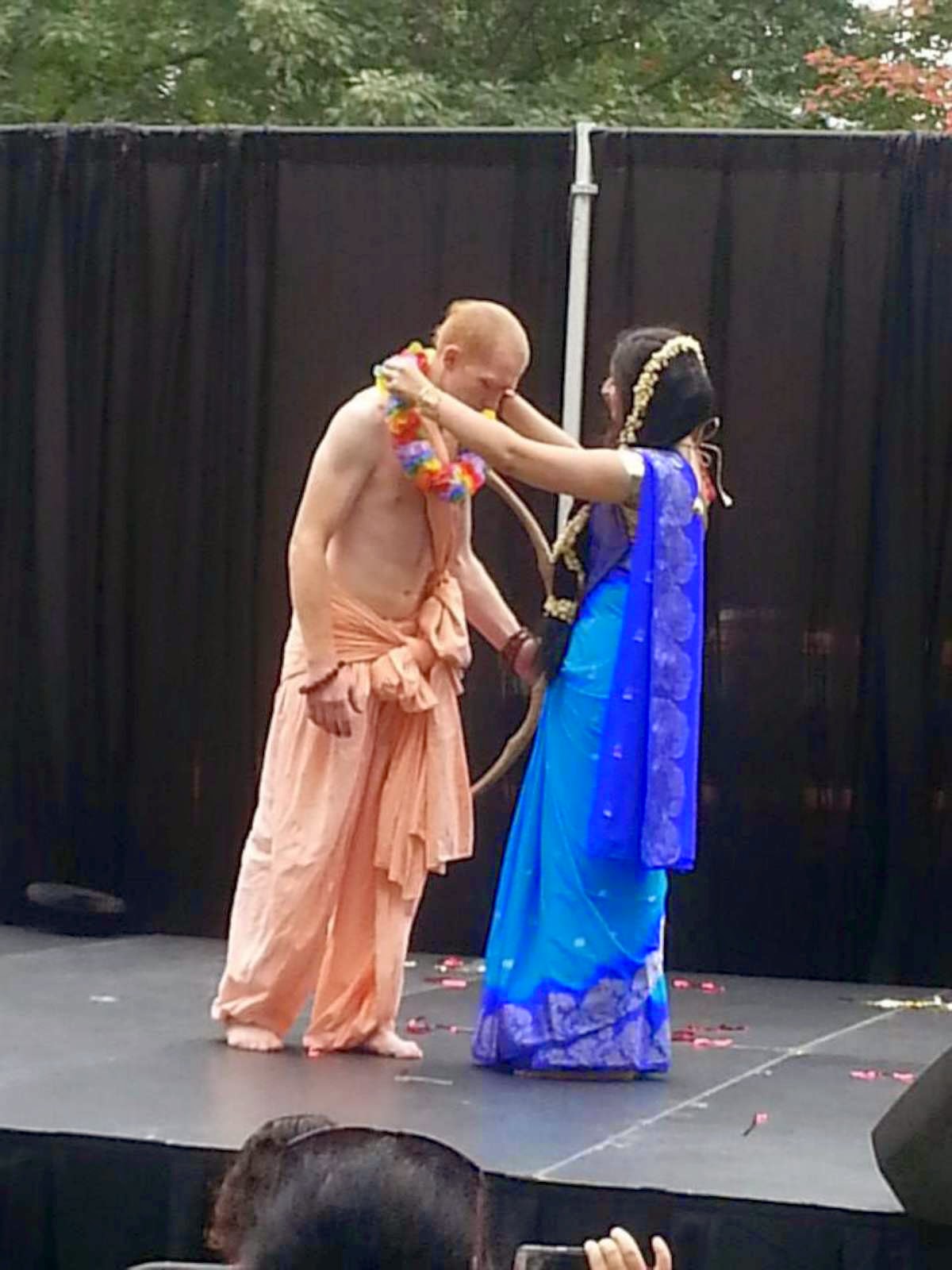

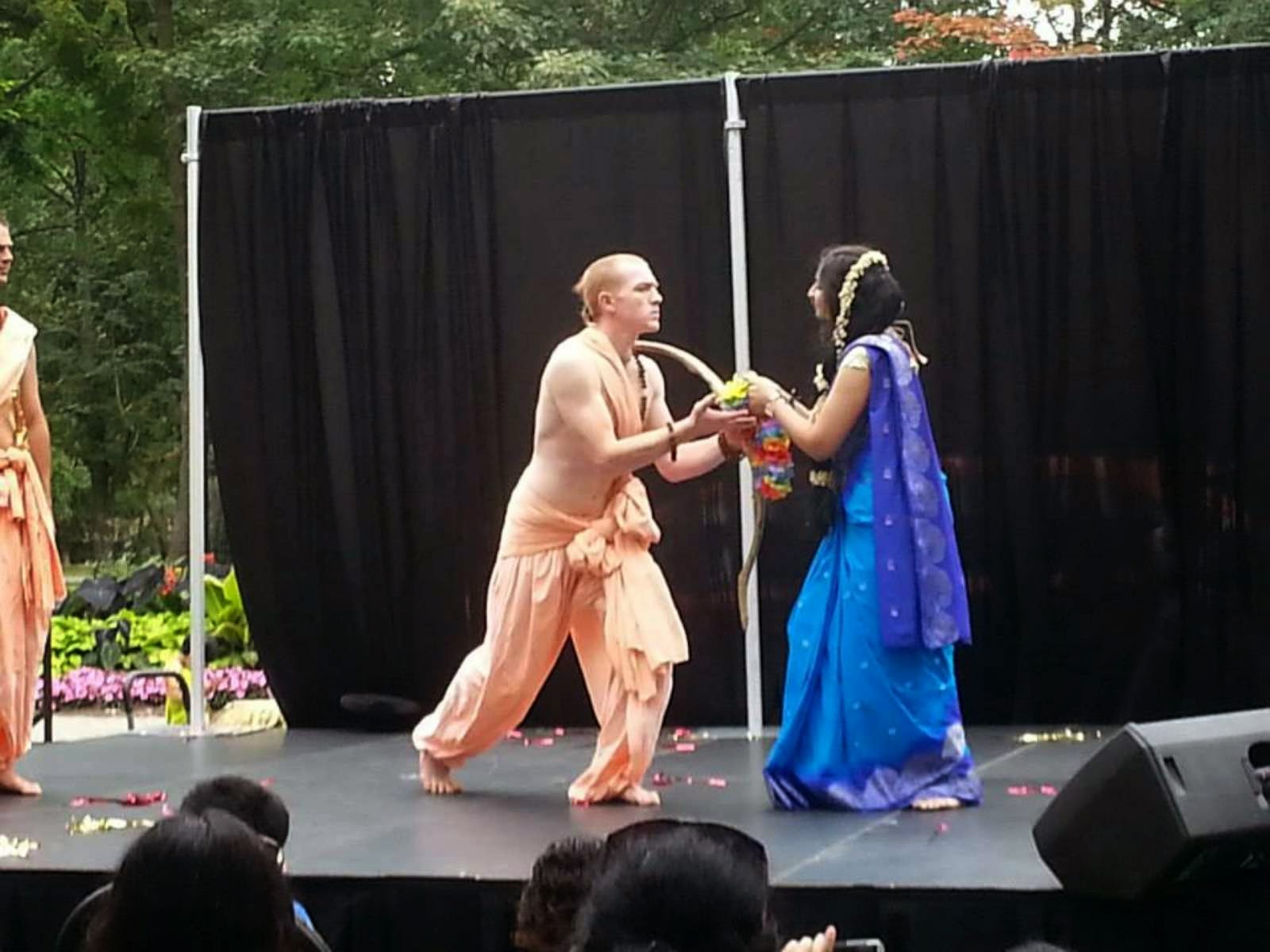














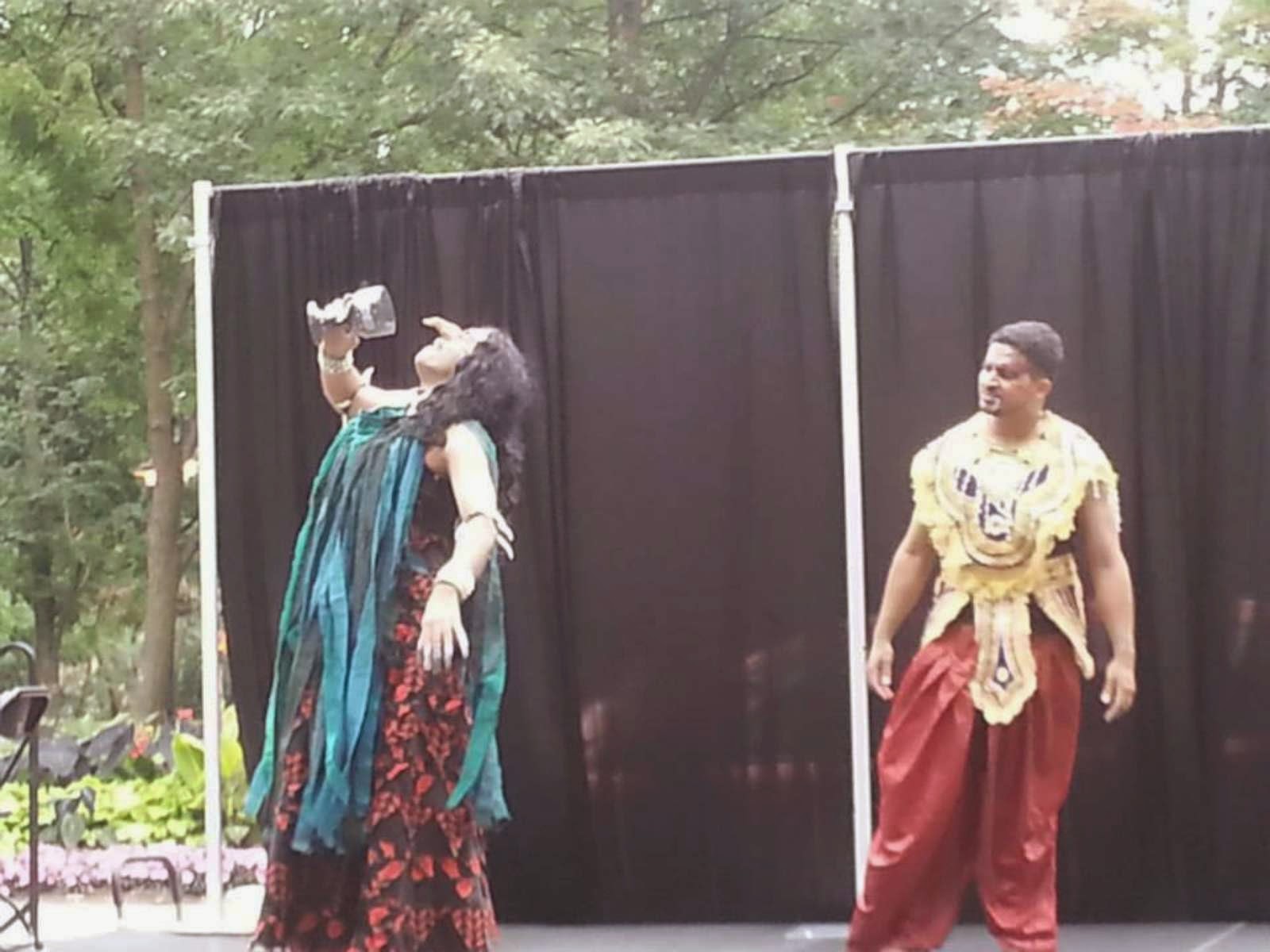




 In the sastras it is said that if a person only once chants the holy name and completely surrenders unto the lotus feet of the Lord, the Lord immediately considers him His ward and is always inclined to give him protection. (Srimad-Bhagavatam, 6.2.49 Purport)
In the sastras it is said that if a person only once chants the holy name and completely surrenders unto the lotus feet of the Lord, the Lord immediately considers him His ward and is always inclined to give him protection. (Srimad-Bhagavatam, 6.2.49 Purport)  Simply addressing the energy of the Supreme Lord as Hare and the Lord Himself as Krishna very soon situates the Lord within the heart of the devotee. By thus addressing Radha and Krishna, one directly engages in His Lordship's service. (Sri Caitanya-caritamrta, Adi-lila 7.73 Purport)
Simply addressing the energy of the Supreme Lord as Hare and the Lord Himself as Krishna very soon situates the Lord within the heart of the devotee. By thus addressing Radha and Krishna, one directly engages in His Lordship's service. (Sri Caitanya-caritamrta, Adi-lila 7.73 Purport)  Simply by chanting the holy name of Krishna a devotee of the Lord can approach the supreme destination easily and happily, but this destination cannot be approached by any other process of religion.
(Bhagavad-gita 12.6-7 Purport)
Simply by chanting the holy name of Krishna a devotee of the Lord can approach the supreme destination easily and happily, but this destination cannot be approached by any other process of religion.
(Bhagavad-gita 12.6-7 Purport)  Simply addressing the energy of the Supreme Lord as Hare and the Lord Himself as Krishna very soon situates the Lord within the heart of the devotee. By thus addressing Radha and Krishna, one directly engages in His Lordship's service. (Sri Caitanya-caritamrta, Adi-lila 7.73 Purport)
Simply addressing the energy of the Supreme Lord as Hare and the Lord Himself as Krishna very soon situates the Lord within the heart of the devotee. By thus addressing Radha and Krishna, one directly engages in His Lordship's service. (Sri Caitanya-caritamrta, Adi-lila 7.73 Purport)  By Hanumatpresaka Swami. Hanumatpresaka Swami is a Gaudiya Vaishnava guru and a spiritual leader for the International Society for Krishna Consciousness. He is known as a Vaishnava scholar, continuously traveling, lecturing on classical Indian literature and philosophy.
By Hanumatpresaka Swami. Hanumatpresaka Swami is a Gaudiya Vaishnava guru and a spiritual leader for the International Society for Krishna Consciousness. He is known as a Vaishnava scholar, continuously traveling, lecturing on classical Indian literature and philosophy.  On the auspicious Janmastami day, the Hare Krishna Multipurpose Hall were decorated with vibrant sarees, flowers, balloons and Rangolis with Lord Krishna’s footsteps and colorful lights which was a treat to watch. In this majestic backdrop, the deities of Srila Prabhupada, Standing Krishna and Radha Madhava carried on palanquin made way from the multipurpose hall to the Abhisekh Mandap along with kirtan
On the auspicious Janmastami day, the Hare Krishna Multipurpose Hall were decorated with vibrant sarees, flowers, balloons and Rangolis with Lord Krishna’s footsteps and colorful lights which was a treat to watch. In this majestic backdrop, the deities of Srila Prabhupada, Standing Krishna and Radha Madhava carried on palanquin made way from the multipurpose hall to the Abhisekh Mandap along with kirtan  By chanting the Hare Krishna mantra, we gradually develop our eternal relationship with the Supreme Person and thus attain the perfection called svarupa-siddhi. We should take advantage of this benediction and go back home, back to Godhead. (Srimad-Bhagavatam, 10.3.37 Purport )
By chanting the Hare Krishna mantra, we gradually develop our eternal relationship with the Supreme Person and thus attain the perfection called svarupa-siddhi. We should take advantage of this benediction and go back home, back to Godhead. (Srimad-Bhagavatam, 10.3.37 Purport )  Omsk is a city and the administrative center of Omsk Oblast, Russia, located in southwestern Siberia 2,236 kilometers from Moscow.
Omsk is a city and the administrative center of Omsk Oblast, Russia, located in southwestern Siberia 2,236 kilometers from Moscow.  His Holiness Jayapataka Swami Maharaj gave Harinam initiation to 600 devotees. (Sri Mayapur Dham) Photos: Janakiram Prabhu
His Holiness Jayapataka Swami Maharaj gave Harinam initiation to 600 devotees. (Sri Mayapur Dham) Photos: Janakiram Prabhu 




















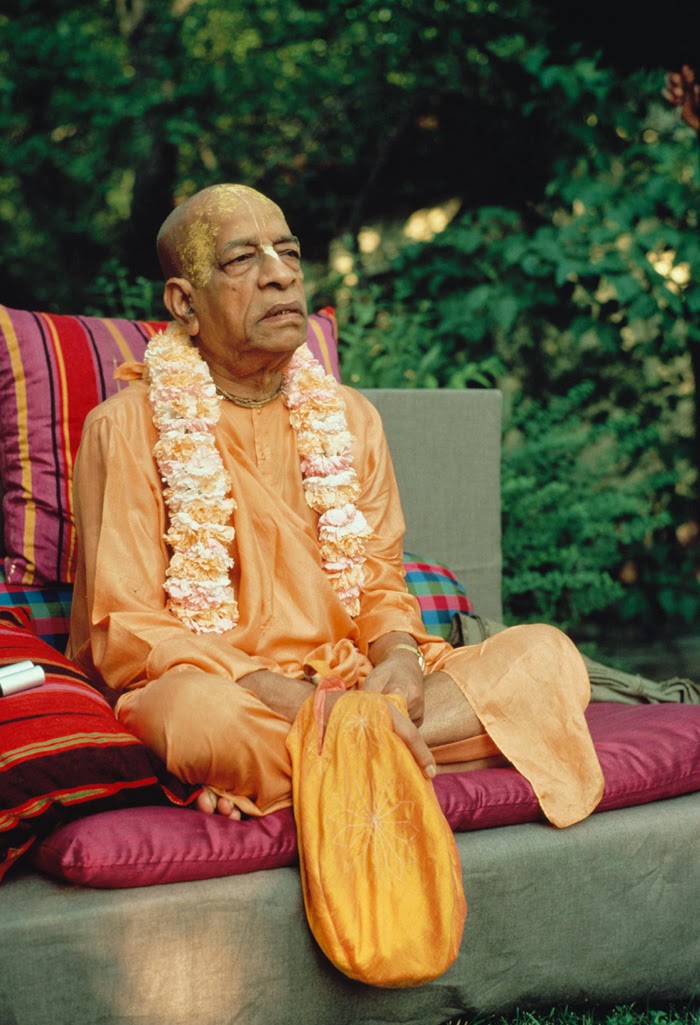


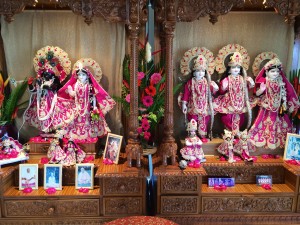

 When loud chanting of the Hare Krishna mantra is performed all over the world by those who follow in Your footsteps, all living entities, moving and nonmoving, dance in ecstatic devotional love. (Sri Caitanya-caritamrta, Antya-lila, 3.72)
When loud chanting of the Hare Krishna mantra is performed all over the world by those who follow in Your footsteps, all living entities, moving and nonmoving, dance in ecstatic devotional love. (Sri Caitanya-caritamrta, Antya-lila, 3.72)  Worship of the Lord, whose name is like the sun, for just as a slight appearance of the sun dissipates the darkness of night, so a slight appearance of the holy name of Krishna can drive away all the darkness of ignorance that arises in the heart due to greatly sinful activities performed in previous lives. (Sri-Caitanya-caritamrta, Antya-lila, 3.62)
Worship of the Lord, whose name is like the sun, for just as a slight appearance of the sun dissipates the darkness of night, so a slight appearance of the holy name of Krishna can drive away all the darkness of ignorance that arises in the heart due to greatly sinful activities performed in previous lives. (Sri-Caitanya-caritamrta, Antya-lila, 3.62) 




